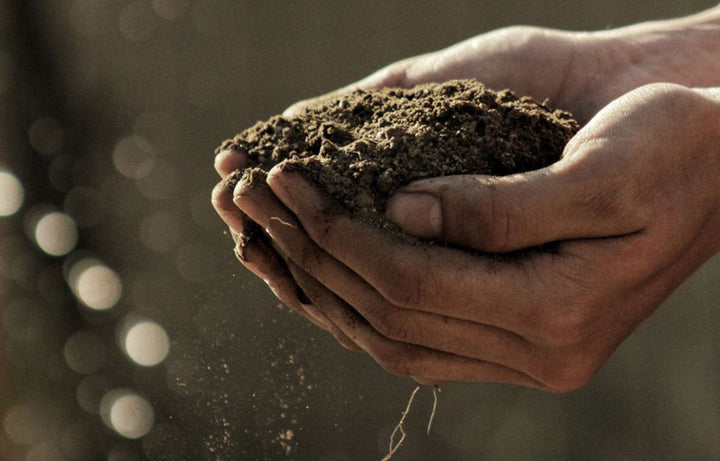
Beginners Guide to Composting
Beginners Guide to Composting
Did you know that 47% of the average Australian household bin is organic waste? When organic waste breaks down in landfill it produces methane, a greenhouse gas that’s 25 times more potent than carbon dioxide. If you’ve been thinking about composting, now is the time!
Composting is a simple and easy way to reduce household waste. It’s also one of the easiest things you can do to nourish your garden and help the environment. Knowing a few basics is the key to getting started with composting. Understanding these will mean you’re able to grow, manage and maintain your compost with minimal fuss and maximum benefits.
What do I need?
To get started you need the right tools and the correct ingredients:
TOOLS AND INGREDIENTS:
- A standard plastic compost bin or a homemade compost bin that’s made from timber, chicken wire etc.
- A compost turner and garden fork.
‘GREEN’ ORGANIC INGREDIENTS:
Kitchen fruit and vegetable scraps, eggshells, small amounts of carbohydrates (rice & pasta), coffee grinds, tea bags, green cut grass and clippings, flowers, manure (cow, chicken or horse).
‘BROWN’ ORGANIC INGREDIENTS:
Dried leaves, twigs, soil, straw, newspaper and shredded cardboard.

Once you have your ingredients, composting is simply a matter of adding them to your bin in the right quantities. It’s useful to think of your compost like a lasagne: you need alternating layers of green and brown ingredients to create good compost.
THE FIRST STEP is to find the right location for your compost bin. To make it convenient to use, position your bin so that you have easy access to it from your kitchen. It can be placed both in the sun or the shade; the warmer the location, the faster the compost will work.
CREATE your first layer with dried leaves and twigs. Place these ‘brown ingredients’ at the bottom of your compost bin and water thoroughly. This water encourages bacterial growth which allows your compost to start breaking down.
YOUR SECOND LAYER should include ‘green ingredients’. Add a layer of clippings, plant scraps or other green materials so that it’s roughly the same thickness as your first brown layer.
FOR YOUR THIRD AND FORTH LAYERS, return again to brown and then green ingredients, including materials such as shredded newspaper or straw and vegie scraps. Add water to moisten.
OPTIONALLY you can finish off your foundation by adding a thin layer of soil from your garden to ‘seed’ the compost in. This ‘seed’ is about kickstarting your compost by introducing ingredients rich in useful microorganisms.
YOU CAN NOW ADD food scraps and other green materials to the bin. Every time you empty your kitchen scrap bucket, be sure to cover with a layer of brown material to build a balanced and productive compost. Your compost is ready when it looks like rich, dark soil. You can tilt the bin and scape away the finished compost at the bottom, or lift off the bin and start a new pile.

Keeping your compost aerated
Giving your compost access to air is one of the simplest ways to speed up the composting process. To keep your compost aerated, turn it over or fluff it up every few weeks. You can do this with a garden fork, or a compost turner tool - these can be obtained from most garden and hardware stores. You can also help your compost stay aerated by using ingredients that allow air to be captured. Materials like dried leaves and shredded newspaper create spaces in your compost that hold in air and fuel micro-organism growth in your bin.
Healthy compost means healthy soil; healthy soil means healthy food; healthy food means healthy people and animals. It all starts with compost, the very stuff of life itself.
Tips & Tricks:
-
Just like our human digestive system, your compost will digest and break down foods faster or slower depending on the size of the food. By breaking big ingredients up into smaller pieces, you’ll allow your compost to break down faster and quicken the pace of your composting
-
Make it easy on yourself. Prepare a bucket of different brown material like leaves, twigs or newspaper to store next to your compost bin. Every time you add a new batch of ‘green’ food scraps from the kitchen, you’ll have your ‘brown’ material directly to hand, so you can add an equivalent quantity.
-
Using a diverse variety of ingredients will produce compost that’s rich in nutrients. Depending on what your garden and kitchen are creating, don’t hesitate to mix up what kind of green or brown ingredients you add to your compost. Picking up leaves from the park or material from a neighbour is another great way to add diversity to your compost.
Never compost: Plastics, metals, chemicals, weeds, diseased plants, glossy magazines, gum leaves, treated pine sawdust.
Information on composting sourced from foodwise.com.au
If you're in Melbourne and looking for the best places to source quality plants for your designer pots, explore our curated list of top nurseries in Melbourne to find expert advice and premium plant selections.

